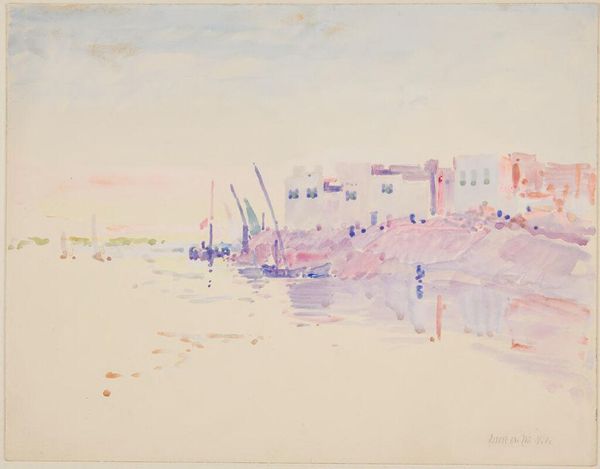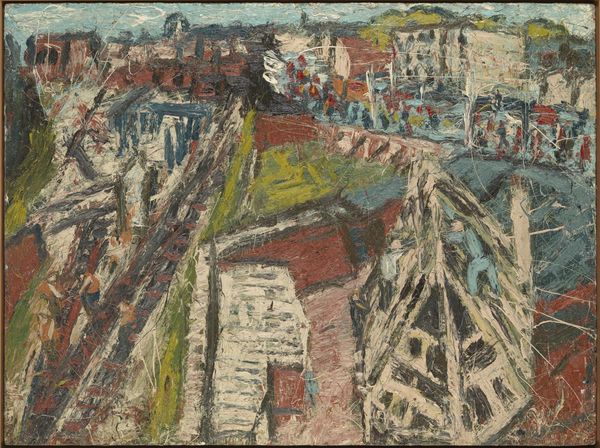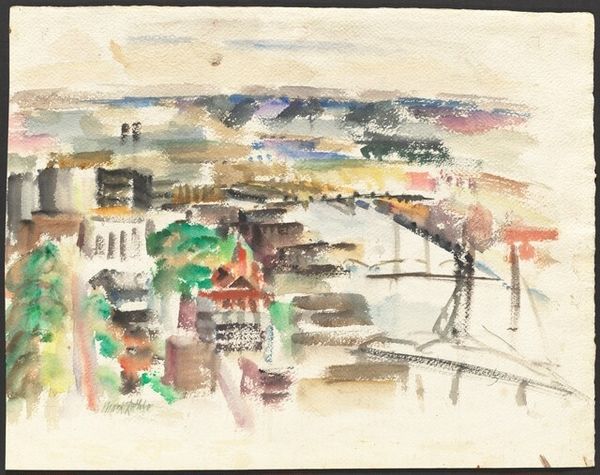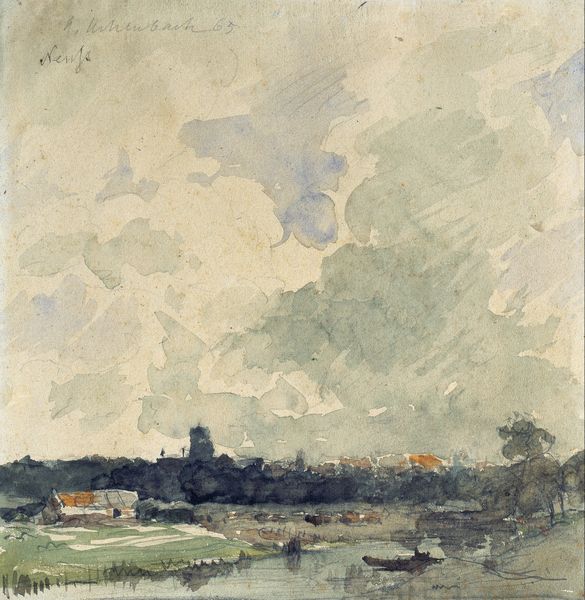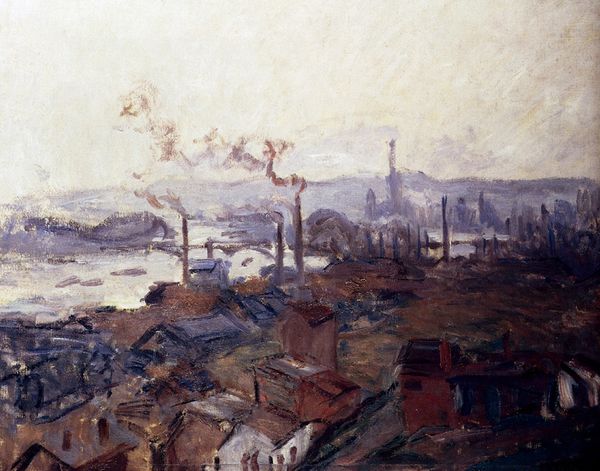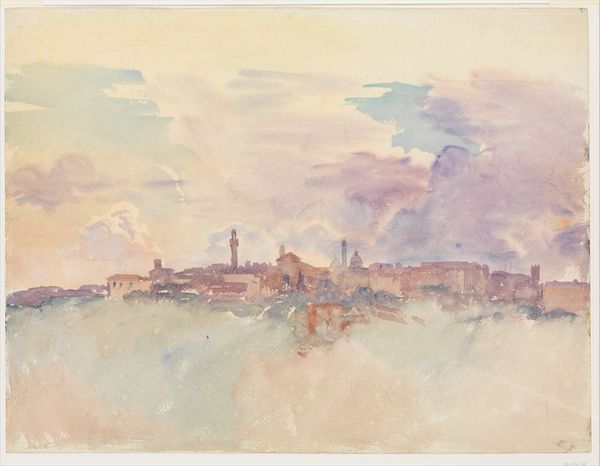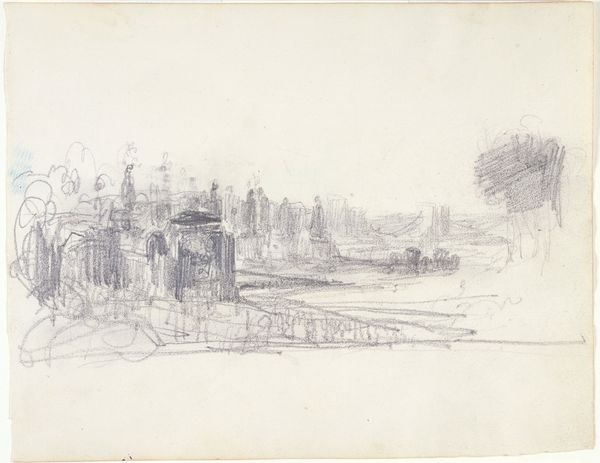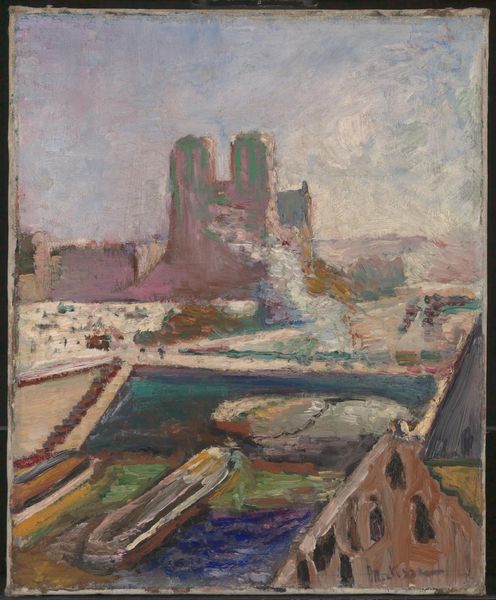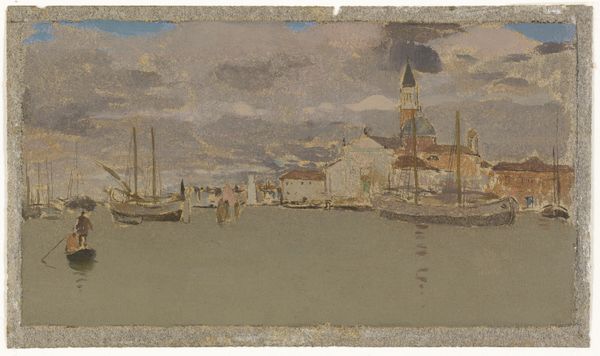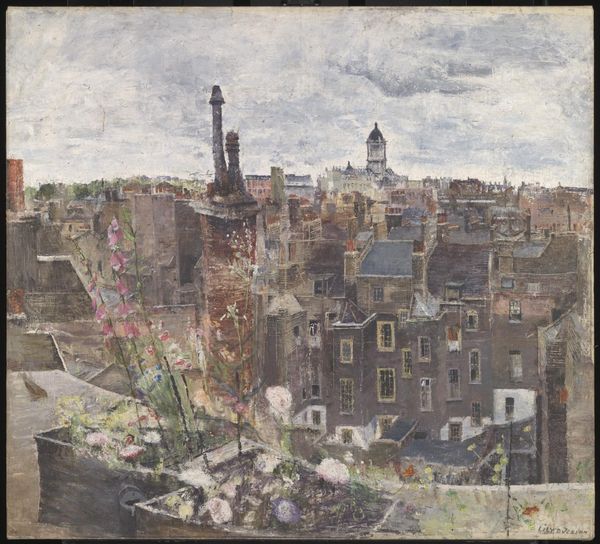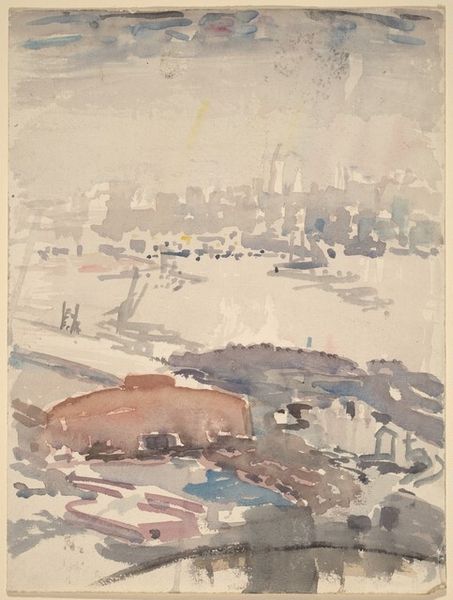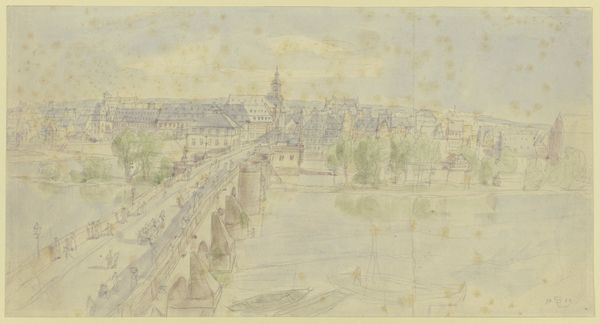
Dimensions: frame: 1096 x 1396 x 75 mm, 22 kg support: 914 x 1232 mm
Copyright: © The estate of Oscar Kokoschka | CC-BY-NC-ND 4.0 DEED, Photo: Tate
Editor: Oskar Kokoschka's "View of the Thames," held here at the Tate, presents a cityscape shrouded in atmospheric hues. The brushstrokes are so gestural, almost frantic. What strikes you most about its formal qualities? Curator: The dynamism lies precisely in that expressive brushwork. Observe how Kokoschka employs short, broken strokes to construct form, fracturing light and space. It is a calculated dispersal of visual information, wouldn't you agree? Editor: Yes, the fragmented strokes definitely energize the scene. I also notice the limited palette; it almost feels monochromatic. Curator: Indeed. The restrained use of color serves to unify the composition, emphasizing tonal relationships and the play of light across the surface. Consider how that restricted palette impacts your reading of the work. Editor: It makes the texture and brushwork even more prominent, focusing my attention on the surface of the painting itself. Thank you. Curator: Precisely. It reveals how a work's formal elements actively shape our perception.
Comments
tate 6 months ago
⋮
http://www.tate.org.uk/art/artworks/kokoschka-view-of-the-thames-t01252
Join the conversation
Join millions of artists and users on Artera today and experience the ultimate creative platform.
tate 6 months ago
⋮
Throughout his long career, Kokoschka developed a special affinity for riverscapes, painting river scenes in many major European cities, including Prague, Lyons, Dresden and Salzburg. He painted and sketched many river views of London from 1925 to the early 1970s, most frequently looking up or downstream from buildings near Waterloo Bridge. This view looks down river toward St Paul's Cathedral. Painted during a hot October, the artist's vantage point was the roof of the Shell-Mex building on the Strand. The picture was painted entirely on the spot without preliminary studies of any kind. Gallery label, August 2004

